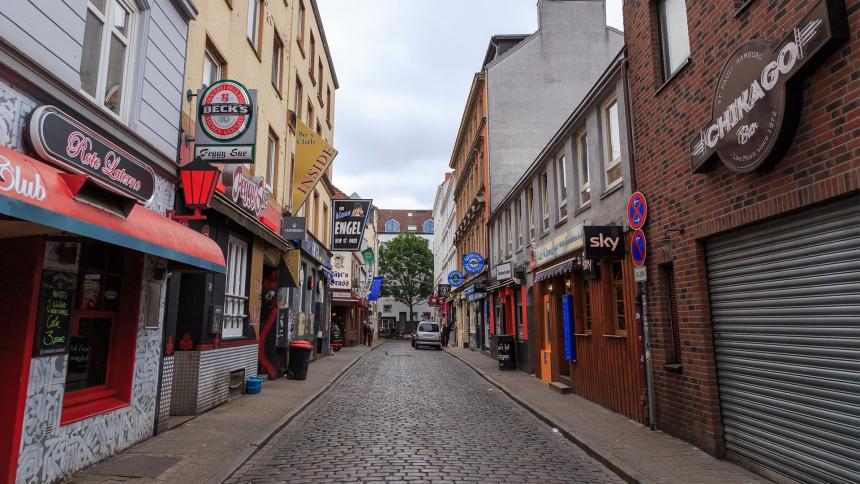
Fritz Honka: The gruesome crimes of Germany's most notorious killer
Hamburg nightlife in the 1970s wasn’t all bell-bottom jeans, slinky halter-neck tops and rockabilly grunge. The red-light district concealed a dark secret. Fritz Honka, a seemingly unremarkable man, carried out a series of brutal murders. Over five years he killed four women, concealing their dismembered bodies in his squalid apartment. It wasn’t until a fire swept through the apartment complex that his gruesome acts were exposed.
A troubled beginning
Fritz Honka was born on 31st July 1935, in the Saxon city of Leipzig. His father, a devoted communist, was imprisoned in a concentration camp, leaving his mother overwhelmed and unable to care for the large family. This led to Honka and his siblings being placed in children's homes, a common practice in post-war Germany for families in distress.
Things didn’t improve much for Honka as a teenager. He struggled academically and socially. A bricklaying apprenticeship helped give him some direction, but he never finished and a few years later a severe car accident left him with facial disfigurements, including a flattened nose and asymmetrical features. These injuries, combined with a failed marriage, deepened his isolation and fuelled resentment, particularly towards women who rejected him.
Seeking anonymity, Honka moved to Hamburg in the 1960s. It wasn’t long before he became a regular on the Reeperbahn, a notorious red-light street lined with bars and brothels. Alcohol and sex weren’t enough for Honka though. In the early 1970s he committed his first murder. It was the first of four that saw him emerge as one of Germany’s most notorious serial killers.
The heinous crimes of Fritz Honka
Honka’s victim? 42-year-old Gertraud Bräuer, a woman with a history of alcoholism and homelessness. She was the first of several women murdered at the hands of Fritz Honka, who preyed on vulnerable sex workers from the red-light district, often battling addiction.
Between 1970 and 1975, Honka lured four women to his apartment on Zeißstraße with promises of food, alcohol or shelter.
Honka didn’t just murder his victims. He used a saw to dismember their bodies in his cramped flat and hid the remains in the walls, crawlspaces and the attic. He’s not the first killer to use this technique, with monsters like Tony Mancini also infamous for dismembering his victims.
Honka used pine-scented air fresheners and chemicals to mask the odour of decomposing body parts. But that didn’t stop neighbours from complaining about the foul smell, unaware of its true source.
Each murder followed a pattern of escalating violence, highlighting Honka’s growing detachment from humanity.
A discovery born of flames
Honka’s crimes (and the bodies of his victims) might have remained hidden indefinitely if not for an accidental fire. A blaze broke out in his apartment building on 17th July 1975 which saw emergency workers descend on the complex. While searching the charred remains, firefighters discovered dismembered body parts wrapped in plastic and stashed in the walls and attic spaces. Clearly not victims of the fire but of a different, more macabre crime.
Authorities initially believed multiple perpetrators were involved. However, after questioning Honka, inconsistencies appeared in his alibis. Forensic evidence and his eventual confession tied him to the murders.
A twisted mind revealed
Honka was put on trial in 1976 and his lawyers were quick to highlight his troubled psyche. Psychiatrists described him as deeply disturbed and driven by feelings of inadequacy and resentment toward women. He claimed to have committed the murders in drunken rages, though the meticulous concealment of his crimes suggested a calculated effort to avoid being caught.
Despite attempts to charge Honka with murder, he was ultimately convicted of four counts of manslaughter. Why did he literally get away with murder? The court accepted his claims of ‘diminished responsibility’ caused by alcohol dependency and mental instability. He received a 15-year prison sentence and was committed to a psychiatric hospital after his release in 1993.
A legacy of terror
The unthinkable crimes of Fritz Honka cast a long shadow over Hamburg, particularly the St. Pauli district. His crimes even inspired the 2019 German film The Golden Glove (Der Goldene Handschuh), named after one of the seedy bars Honka once frequented.
A grim social commentary
Honka’s case wasn’t just tragic for the victims. The murders raised uncomfortable questions about societal neglect in Germany and around the world. Many of his victims were women living on the fringes of society, whose disappearances went unnoticed for years. It’s a similar narrative to killers like the Suffolk Strangler, who also preyed on women working in red-light districts.













